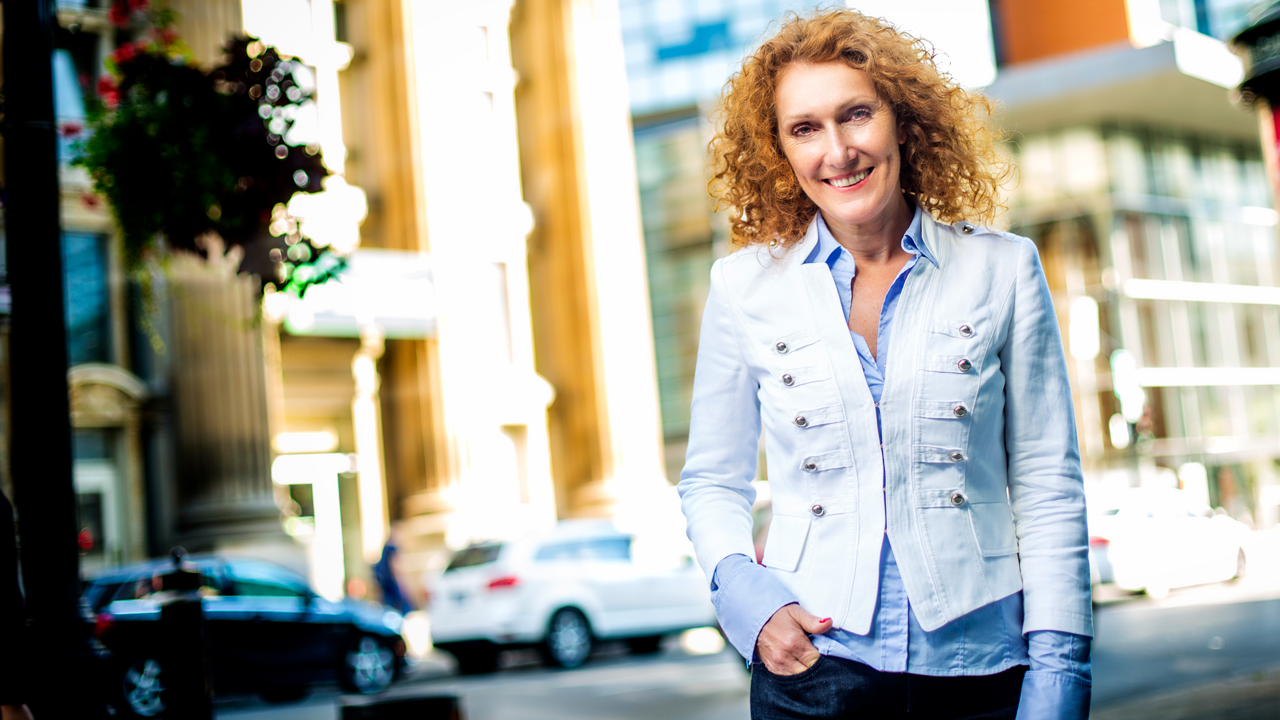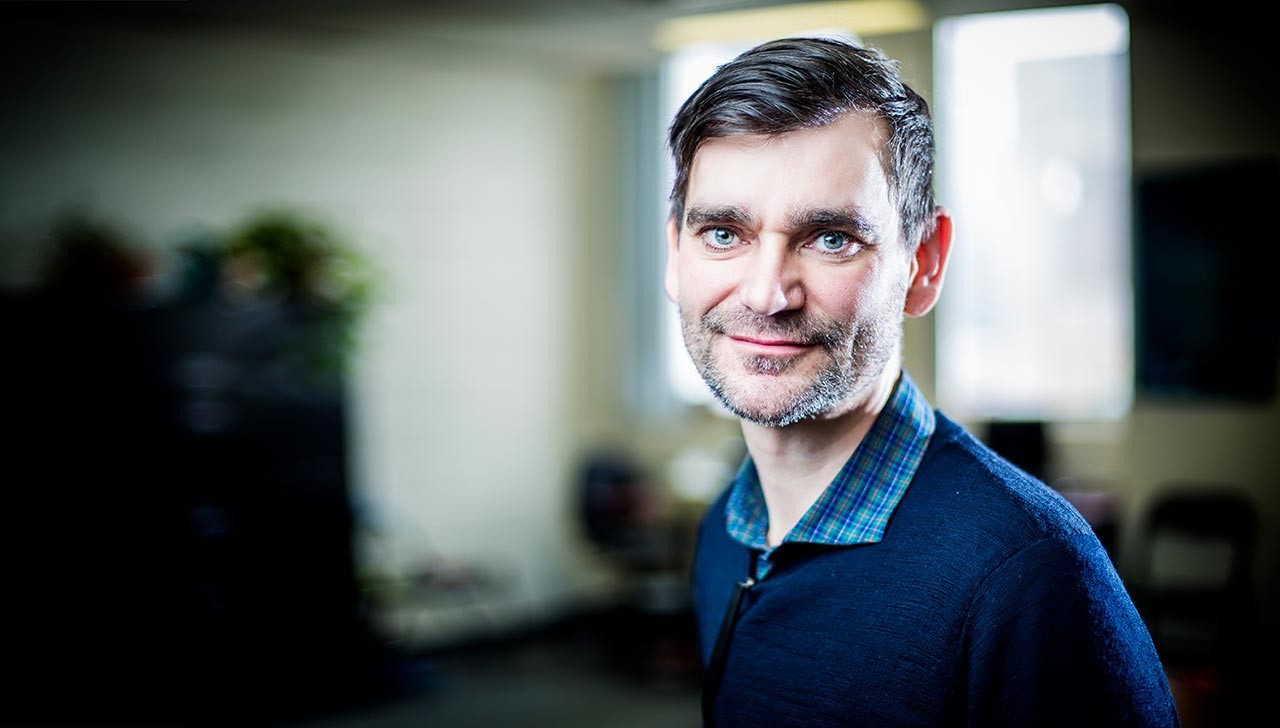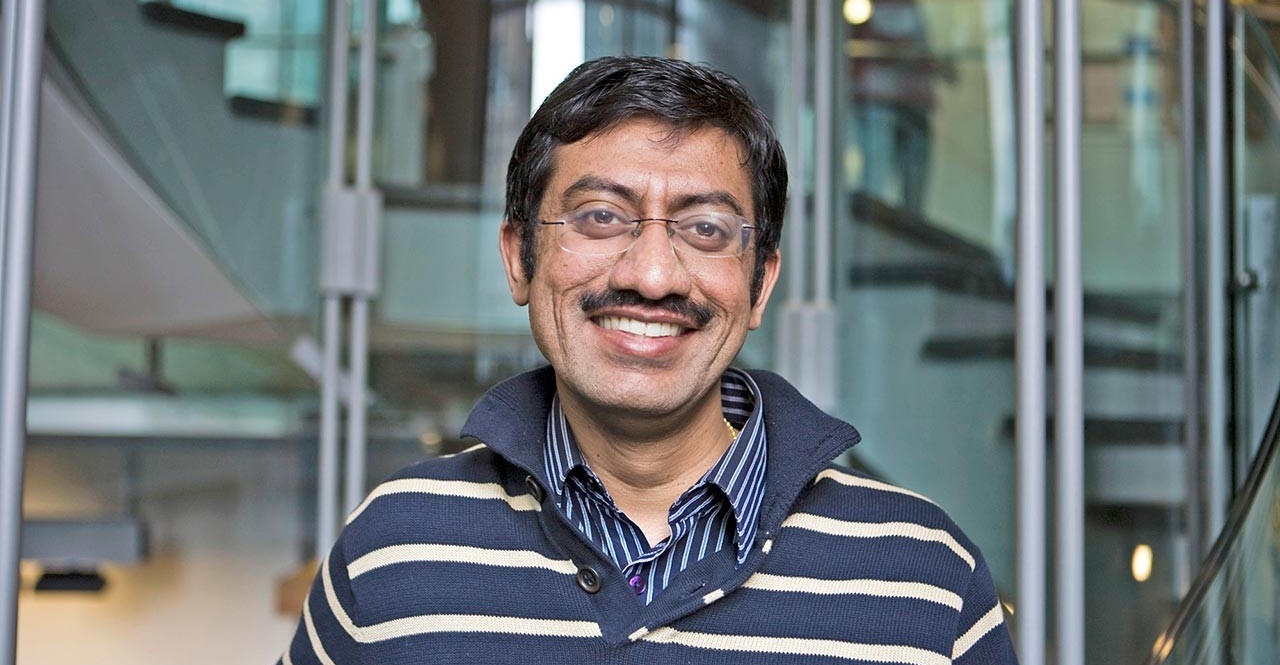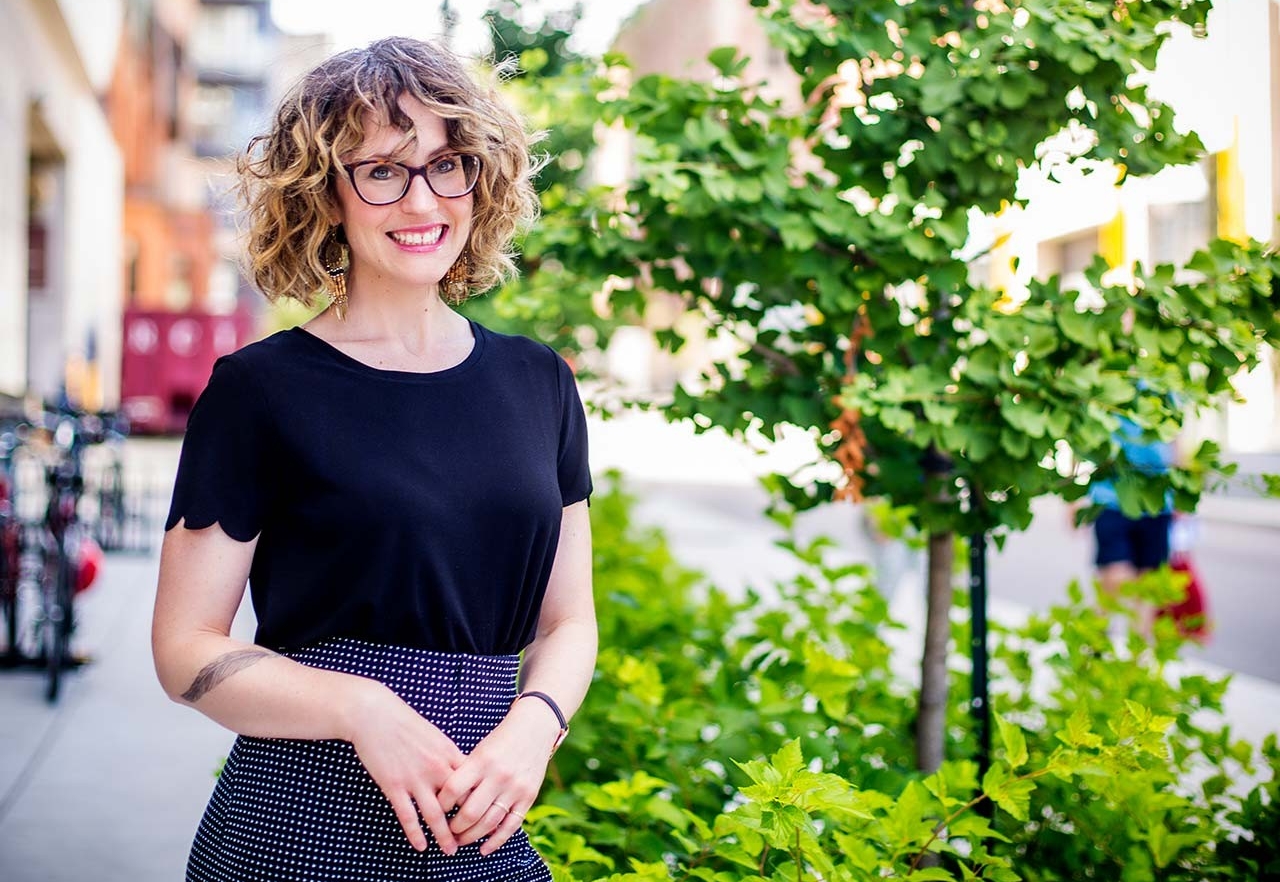City Centre
Cities are constantly evolving. Their infrastructure, transportation, communications, housing, sustainability and energy consumption, among other factors, are always works in progress.
How well they progress, however, depends greatly on the depth and quality of the planning, design and innovative thinking of those in charge.

That’s why the mounting research that Concordia faculty have been conducting on cities over the past decade is especially relevant. Today the university can boast of a wide spectrum of experts across all faculties who explore such fields as integrated building design, clean-energy technology, smart technologies to optimize community operations, and geo-environmental sustainability, to name a few.
It’s also involved in a number of city-focused projects outside the university walls, such as our Next City Vanguard Conference held at Concordia in spring 2017 (see sidebar: Vanguard Thinking) and the Solar Decathlon in China in 2018.
These cross-disciplinary initiatives give rise to approaches to complex urban challenges and to forward-thinking networking and partnerships.
CoLLaboration
Carmela Cucuzzella, who holds the Concordia University Research Chair in Integrated Design, Ecology and Sustainability for the Built Environment (IDEAS-BE), is working to increase urban sustainability. Her goal is to make innovations conducive to the current and future lifestyle of city dwellers so that people make the fullest use of new sustainable technologies. She collaborates with students and peers to bridge the gap between design and engineering when it comes to developing more sustainable urban solutions.
“Designers focus not only on aesthetics, but also how people actually engage with objects, environments and each other,” says Cucuzzella, who’s also associate professor in the Department Design and Computation Arts in the Faculty of Fine Arts. “We explore how to improve existing ways of being and doing to make innovations more convenient, flexible and sustainable.”
For example, local governments need to take workplace culture into account when switching urban technologies to avoid upsetting workers. The same applies for home and other cultural settings. “Integrating a better understanding of what prompts human beings to change their behaviour is essential,” Cucuzzella emphasizes.
 Carmela Cucuzzella, associate professor in Design and Computation Arts, looks at how to make urban innovations that can help city dwellers best tap into new sustainable technologies or learn about everyday actions they can take to be more sustainable.
Carmela Cucuzzella, associate professor in Design and Computation Arts, looks at how to make urban innovations that can help city dwellers best tap into new sustainable technologies or learn about everyday actions they can take to be more sustainable.
“We can design highly efficient showerheads to conserve water, for instance, but if people continue to take 10-minute showers, we haven’t solved the problem with the new technology,” she explains. “If we incorporate a mechanism that alerts people when three minutes are up, we have a better chance of making individuals aware of unsustainable behaviour and perhaps help to change their shower habits.”
Cucuzzella set up CoLLaboratoire at Concordia to explore how collaborative efforts among artists, engineers, architects and other experts in a community can innovatively create public spaces that advance urban sustainability and heighten public awareness about climate-change issues.
CoLLaboratoire partnered last year with Concordia’s Centre for Zero Energy Building Studies to invite young innovators to come up with a model for a solar-powered bus shelter. The competition attracted 26 proposals from several countries. The winning project devised a fun way to relate solar energy collection and use to the public. “The shelter’s canopy lit up at dusk and, as the evening progressed, the canopy reflected the depleted solar energy by resembling a battery icon,” Cucuzzella says.
The project also showed how a design as simple as a bus shelter could be constructed with a larger canvas to accommodate a variety of activities during off-peak hours. “The expanded design could be used to engage the local community in innovative ways, such as showcasing Concordia’s research, or even setting up a weekend vegetable market, second-hand bookstore or used clothing exchange.”
Depending on the project, designers, planners, engineers, geographers, sociologists, anthropologists and even gamers may be able to work together to find the best urban solutions. “CoLLaboratoire has focused on smaller local projects to see how we may be able to scale them up,” Cucuzzella says. “It would be quite rewarding if Montreal, with the help of Concordia’s research, becomes a city lab for this kind of collaborative multidisciplinary approach to innovative urban sustainability.” One of Cucuzzella’s next steps with colleagues at the Centre for Zero Energy Building Studies is to build the solar bus shelter at Loyola Campus, now that funding has been secured. “It will be a great way for Concordia to engage with the local community,” she says.
An app for that
Zachary Patterson, who holds the Canada Research Chair in Transportation and Land Use Linkages for Regional Sustainability, uses smartphone technology to help urban planners in Canada and as far away as Ghana anticipate future transportation requirements. “Current data is needed to figure out what new roads, bridges, subways, bus routes and bicycle paths will be needed to ease congestion 20 years from now,” explains Patterson, associate professor of Geography, Planning and Environment in the Faculty of Arts and Science.
While transportation-related data used to be effectively collected through home telephone surveys, fewer people — especially in younger generations — have landlines now. Patterson has worked with his students and peers to develop a smartphone app to capture information through GPS about the daily route and mode of transportation from willing participants.
“The information tends to be more accurate because it’s easy for people to forget to report in a survey when they’ve taken a slight detour, for example, to pick up groceries on the way home,” Paterson says. “Such apps can help capture trips that survey respondents might otherwise forget to report.”
 Through his research, Zachary Patterson, Associate Professor of Geography, Planning And Environment, develops smartphone technology to help urban planners around the world tackle future transportation issues.
Through his research, Zachary Patterson, Associate Professor of Geography, Planning And Environment, develops smartphone technology to help urban planners around the world tackle future transportation issues.
The Concordia community was the first invited to download an initial app, called DataMobile. The app posed a few socio-demographic questions to each user regarding age, gender, role — student or staff — typical trips and transport modes, and subsequently logged each participant’s daily trips for up to two weeks.
“People were incredibly receptive to the project, with many welcoming the opportunity to participate in a study that could help make future transportation more sustainable in the city,” Patterson reports.
A variant of the app became CFSMobile, designed to meet the needs of the Canada Food Study by the University of Waterloo to gather data on the travel and nutritional habits of young people in five different cities. DataMobile was also tailored to become the MTL Trajet app for a large study by the City of Montreal, recording the travel time of commuters, depending on their itinerary and mode of transportation.
Other current uses include a study by the Société de Transport de Montréal and BIXI Montréal of the public’s integrated use of public transit and the bicycle-sharing system. The University of Toronto is using it to examine whether accessibility to public transit from suburban residential towers is a factor in social exclusion.
“We’ve learned so much in the process of making these different apps and realize that it’s far beyond the capabilities of most transportation researchers to develop a data-collection app,” Patterson says. “So we applied for a SSHRC [Social Sciences and Humanities Research Council of Canada] Partnership Development Grant to create a smartphone travel survey platform to make it easy for researchers to use smartphone travel surveys in their work.”
The web platform gives researchers an account in which they create their own questions and surveys. Respondents can then install Concordia’s travel survey app, called Itinerum, to participate in a specific researcher’s tailored version of the app.
Patterson and other Concordia researchers will help process this information while at the same time learning how to provide more functionality to the platform and its app. “Our goal is to completely automate the process so that it readily produces a list of the trips that a person makes over the course of a day with the associated mode and itinerary,” he explains. “It’s harder to do than it seems.”
Global South focus
Govind Gopakumar, associate professor at Concordia’s Centre for Engineering in Society, is also currently researching urban transportation, although he’s taking another route. Gopakumar is studying the sociopolitical repercussions of the enormous increase and reliance on private automobiles in metropolitan centres within the Global South — Africa, Asia and Latin America.
“I am concerned about the highly consumptive, high-carbon lifestyle that I am finding in Global South cities because of the increasing reliance on private automobiles for transportation,” he says.
 Govind Gopakumar, associate professor at Concordia’s Centre for Engineering in Society, studies the troubling reasons and effects of the increasing reliance on private automobiles in cites in the global south.
Govind Gopakumar, associate professor at Concordia’s Centre for Engineering in Society, studies the troubling reasons and effects of the increasing reliance on private automobiles in cites in the global south.
This comes at a time when the developed world is moving in the opposite direction, toward more sustainable transportation options. “People are now figuring out how to undo past choices,” Gopakumar says of decision-makers in Western cities. By comparing the more developed cities with those of the Global South, Gopakumar adds, “The goal is to focus attention on the differences so that we can all move towards greater sustainability.”
Gopakumar notes that this increase in “automobility,” as he terms it, is happening at the expense of other available, low-carbon-emission choices that are not being well prioritized. His research, outlined in his upcoming book and partially documented in his film Social Life of a Bus (available on YouTube), attributes the persistence of automobility to strong cultural and political influences from political elites and middle classes. The steady use of cars is also influenced by individual priorities that frequently override government policies designed to encourage more sustainable options.
“Within this context, new infrastructure, such as high-speed expressways, road flyovers and signal-free corridors, privileges the circulation of private automobiles, while cyclists, pedestrians and a range of other street uses are actively being marginalized to reserve more road space for vehicles,” Gopakumar explains. “Change will only happen if multidimensional concerted efforts are made to provide infrastructure for sustainable mobility and then motivate people to use it,” he adds.
Developing age-friendly communities
As Meghan Joy, assistant professor in the Department of Political Science in the Faculty of Arts and Science, can attest, northern urban centres have their own share of complex issues.
Joy researches how age-friendly communities in the City of Toronto are responding to mobility issues, climate change, immigrant settlement, homelessness and other concerns as they relate to their aging populations. “I’m looking at what local governments and non-profit organizations are doing separately and in tandem to design innovative policies and initiatives that might also serve as possibilities for other communities,” she says. “I’m also looking at how the roles of government and non-profits are changing.”
 Meghan Joy, assistant professor in the Department of Political Science, looks at the challenges faced by aging communities in the Greater Toronto Area.
Meghan Joy, assistant professor in the Department of Political Science, looks at the challenges faced by aging communities in the Greater Toronto Area.
Personal reasons prompted Joy’s curiosity about age-related urban policy. “I could see how my own family was being challenged to provide care for my aging grandparents,” she says. “I also was very affected by an elderly neighbour who my husband and I occasionally helped with groceries and errands: she provided care for her sick husband on her own until she fell down a flight of stairs and passed away.”
Joy’s qualitative research included extensive interviews with 82 people involved in local government or nonprofit/ volunteer organizations to get the full story on what’s working and what has to be improved. For instance, cities and non-profits are increasingly spending their limited budgets on providing care and shelter for homeless seniors in a pricey real-estate market. A lot of non-profit money is likewise going to accessible transportation that organizers hope their city will improve as they invest in new infrastructure.
“The problem is that even when a program works well, such as a public bus service that takes seniors to the library and other places on designated days, there isn’t always the money to extend that service into additional neighbourhoods,” Joy says.
“The same can be said of new community paramedicine programs that organize visits to seniors in social housing or that alert non-profits when seniors are taken to a hospital. These programs improve quality of life, but their funding is often insecure.”
Such issues raise the need for provincial and federal governments to assist financially and otherwise in providing cities with the resources to better accommodate independent and assisted senior living. Improved urban design and emergency preparedness are essential in all city neighbourhoods. “When Toronto had an ice storm a few years ago, volunteers walked up 20 flights to provide meals to seniors, but the organization could only do that at one building,” Joy says.
Computer-savvy baby boomers will change the nature of the aging population’s challenges and open up new economic opportunities for companies to provide more door-to-door services, such as for groceries offered online for home delivery. “More seniors are already booking Wheel-Trans services [Toronto’s door-to-door specialized transit service] online so that less of the staff is involved in phone bookings,” Joy reports.
While computer technologies are now widely used, she emphasizes that cities must remain aware that not everyone has access to a smartphone, computer or Wi-Fi service. The isolation that many seniors tend to experience in larger cities also calls for engaging community programs. “Libraries are particularly strong these days at providing activities,” she says.
Joy is writing a book on her research. “It’s not always possible to cut and paste solutions into new communities, but there’s much to be gained by sharing experiences,” she says. “After all, policies should be about human beings, and people face many of the same or similar challenges as they age. What’s exciting is the abilities of cities and non-profits to tailor support to the diverse needs of senior citizens and, therefore, it is crucial to understand their role and capacities to do so.”
—Julie Gedeon, BA 89, BA 01, MA 09, is a Montreal writer, editor and writing instructor/coach.
BUILDING A STRONG FOUNDATION
While Concordia experts keep a close eye on cities around the world, we introduce you to four graduates who have helped advance major construction projects around Montreal.
- Fady Gabriel, MEng 15 Health care from the inside out
- Muriel Sabbag, BEng 96 Infrastructure as a health priority
- Brian Kelly, BEng 83 Back home building bridges
- Riad Darwiche, BEng 13 Building the interchange of a lifetime
